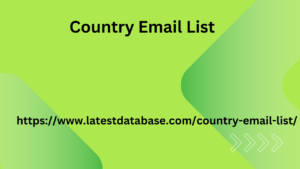Unveiling the Hidden Patterns: A Guide to Feature Analysis Databases
In the realm of data science, features are the building blocks used to train algorithms. But where do these features come from? a powerful tool for extracting meaningful insights from raw data and building robust machine learning models.
What is a Feature Analysis Enter the feature Database?
A feature analysis database isn’t a single, monolithic entity. It’s a concept that encompasses various database systems specifically designed to store and analyze features extracted from raw data. These databases cater to a specific purpose:
- Feature Storage: They efficiently store feature data, which can include numerical values, categorical labels, or even complex text representations.
- Feature Exploration: They provide functionalities to explore, visualize, and analyze the distribution and relationships between different features.
- Feature Engineering: Some databases offer features for feature engineering tasks like dimensionality reduction, normalization, and feature selection.
Benefits of Using a Feature Enter the feature Analysis Database:
Here’s how a feature analysis database can streamline your machine learning workflow:
- Enhanced Data Understanding: By analyzing feature distributions and correlations, you can gain valuable insights into the underlying structure and relationships within your data.
- Improved Model Performance: Choosing the right features and optimizing their representation can significantly improve the accuracy and efficiency of your machine learning models.
- Reduced Development Time: Feature analysis Hire list build data databases can automate tedious tasks like feature cleaning and transformation, saving valuable time during model development.
- Collaboration and Reproducibility: Sharing feature analysis databases within teams or projects can facilitate collaboration and ensure the reproducibility of your machine learning experiments.
Types of Feature Analysis Databases:
The specific functionalities of a feature analysis database depend on the type of data it handles. Here are two common categories:
- Relational Databases: Traditional relational databases with extensions can be adapted for feature storage and basic analysis, especially when dealing with numerical features.
- NoSQL Databases: Non-relational databases like MongoDB or Cassandra offer greater flexibility for storing and managing diverse feature types, including text and image data.
Considerations When Choosing a Feature Analysis Database:
Choosing the right feature analysis database depends on your specific needs. Here are some factors to consider:
- Data Volume and Complexity: The size and complexity of your feature data will dictate the scalability and performance requirements of the database.
- Feature Engineering Needs: Choose a database with built-in features for feature engineering tasks if you plan to perform them within the database itself.
- Integration with Machine Learning Tools: Ensure seamless integration with your preferred machine learning frameworks for a smooth workflow.
Beyond the Database: Additional Feature Engineering Techniques
While feature analysis databases can be powerful tools, they may not cover every aspect of feature engineering. Here are some additional techniques to consider:
- Domain knowledge: Leveraging your understanding of the problem domain can help identify relevant features and guide feature engineering decisions.
- Feature Selection Techniques: Techniques like LASSO regression or feature importance scores can help identify the most relevant features for your model.
- Feature Creation: Creating new features by combining existing ones can often lead to improved model performance.
Conclusion
Feature analysis databases play a crucial role in the modern data science landscape. By storing, analyzing, and optimizing features, these databases This comprehensive guide equips empower you to build stronger, more effective machine learning models. Explore the available options, consider your project needs, and unlock the hidden patterns within your data!
Ready to elevate your machine learning projects? Start exploring feature analysis databases today!


